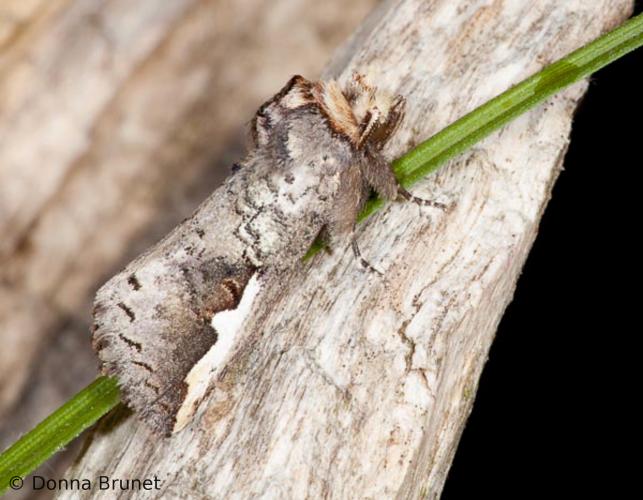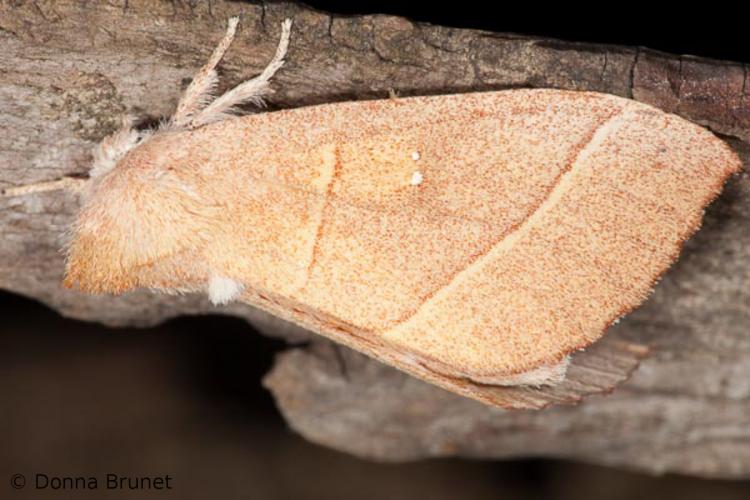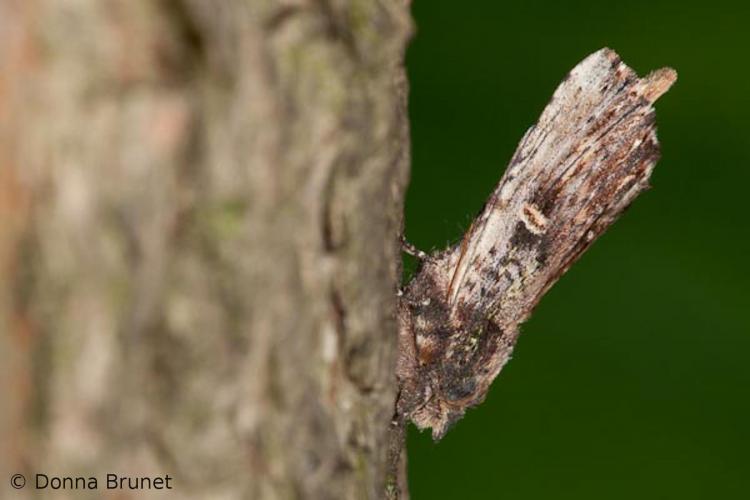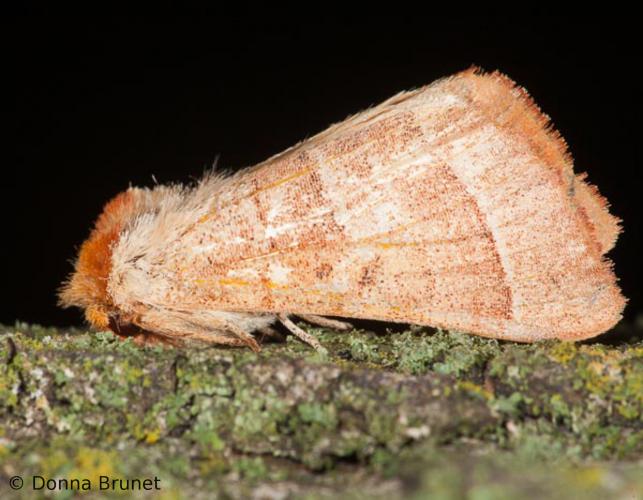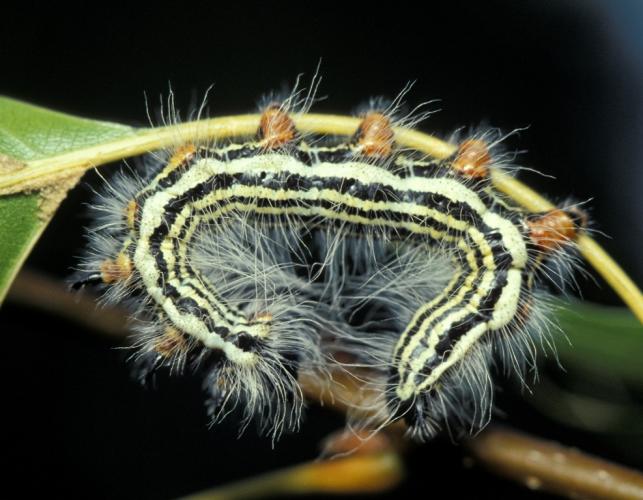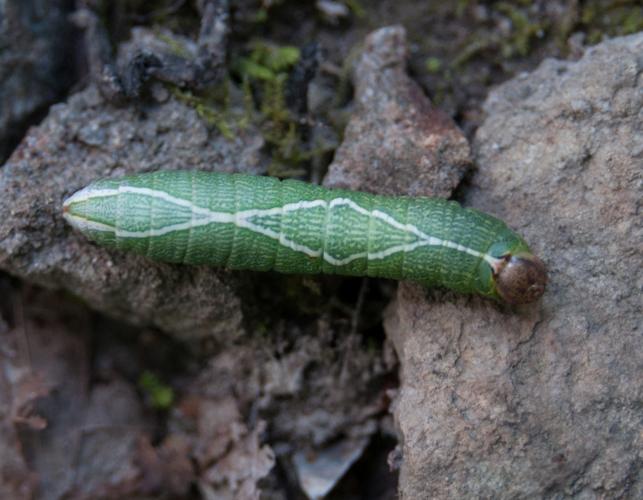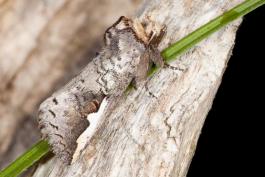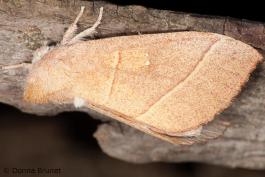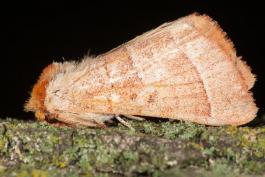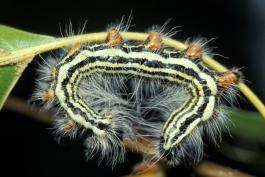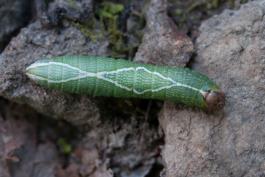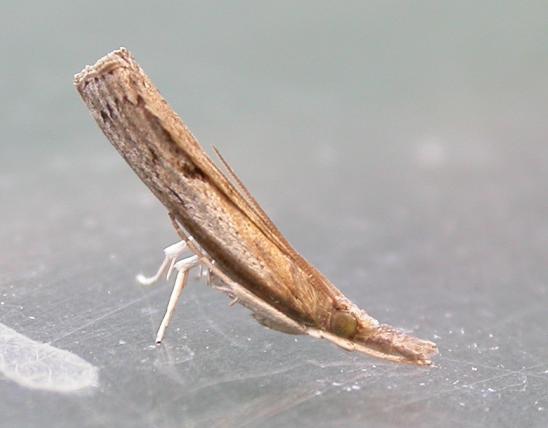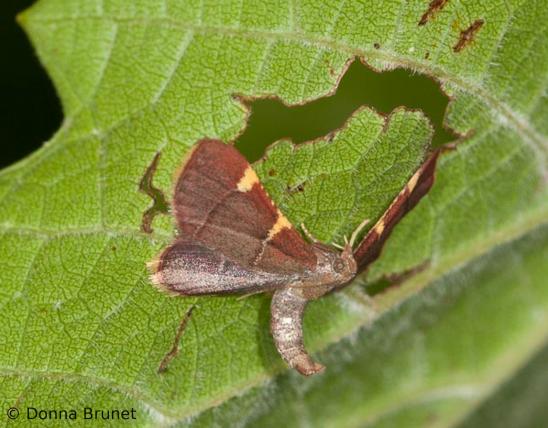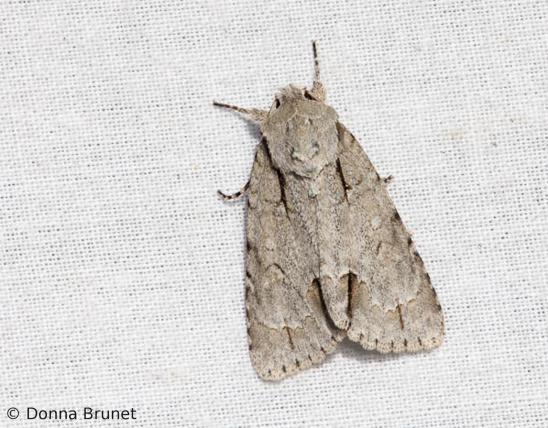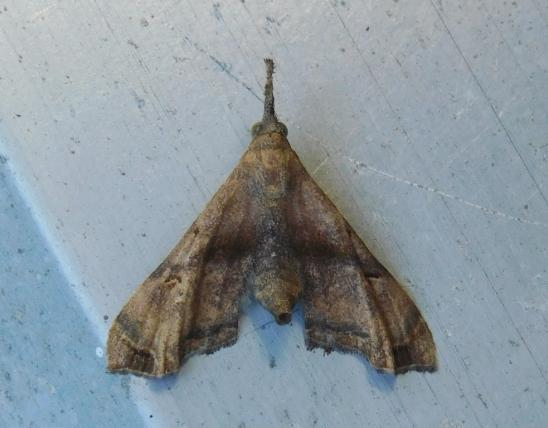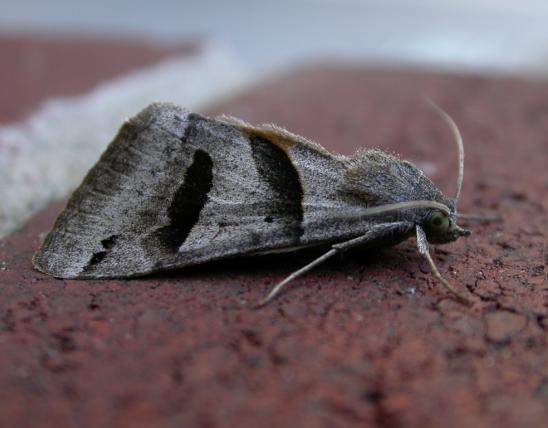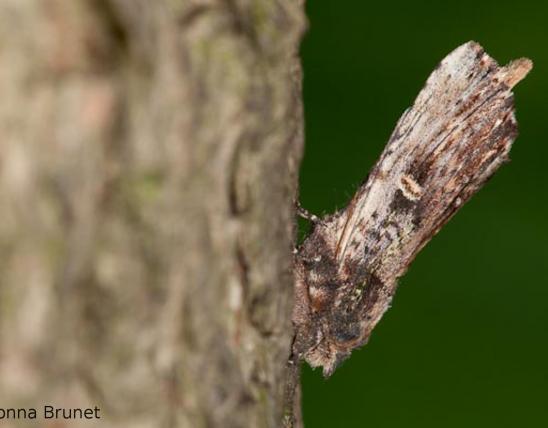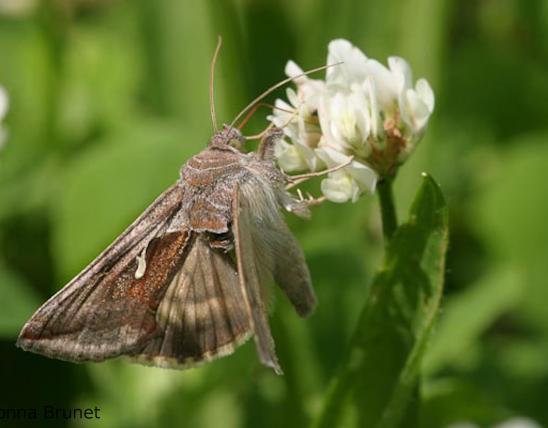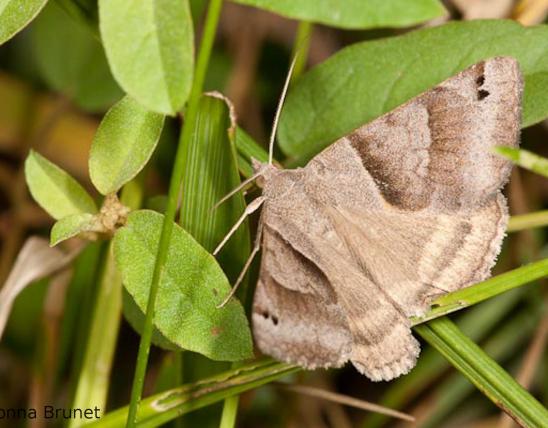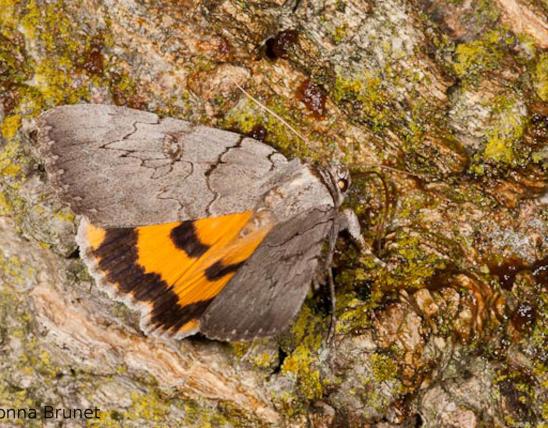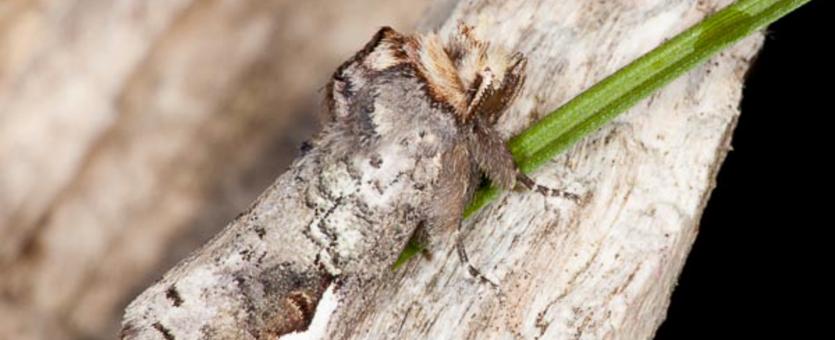
Most types of prominent moths have chunky bodies and with camouflaged, gray or brownish colorations. A heavy covering of scales gives many of them a fuzzy appearance. The head and thorax often have contrasting colors. At rest, they hold their wings over their body like a roof, or else they curl their wings around their abdomens, which are lifted at an angle to the substrate so that they resemble a twig. They are called “prominents” because many species have a tuft of long hairs at the trailing edge of the forewing; these point upward when the moth is at rest.
Larvae vary. They may have head or tail horns or other odd-looking appendages that help them mimic twigs, foliage, twisted or partly eaten leaves, or other portions of the food plant. Some have bright colors, narrow or bold stripes or bands, or zigzag markings. Some are gregarious (cluster in groups). A few have the ability to squirt a stream of toxic chemicals at an attacker; the unicorn caterpillar moth (Schizura unicornis) can squirt formic acid several inches away from its back hump.
Missouri examples include the spotted datana, gray furcula, variable oakleaf caterpillar moth, walnut caterpillar moth, and black-rimmed, rough, and double-toothed prominents.
Similar species: Prominent moths and noctuid moths — both large families in the same superfamily of moths — look similar. Both have the same basic body shape and tend to be camouflage grays and tans.
Wingspan: ¾ to 2½ inches (varies with species).
Statewide.
Habitat and Conservation
Most prominent moths are nocturnal, and people are most likely to see the adults flying around lights at night. The caterpillars, and the females ready to lay eggs, are found on and near the host plants, which varies with the species.
Food
The caterpillars of most species of prominent moths are limited to a single family of woody plants — the walnut and hickory family, for example, or the sumacs, poplars, elms, or oaks.
Life Cycle
Females are usually larger than males in this moth family. The number of generations per year varies according to species. Most species overwinter as caterpillars, then pupate in spring, either beneath the soil surface or in a cocoon on the surface. Like other butterflies and moths, females must lay their eggs on a suitable host plant, so the caterpillars can have the food they need. The caterpillars of a single species may look quite different at each instar (larval stage, between each molt).
Human Connections
Some species of prominent moths , when especially numerous, can be pests on certain types of trees or other host plants.
Mostly, these moths do not interest people, who are generally uninspired by the moths’ subtle colors, despite their extravagant patterns. Many people do not notice them in the first place. But if you like wrens, warblers, chickadees, and other songbirds, you should be glad there are caterpillars that feed them.
Ecosystem Connections
Moths are food for many animals, and night-flying moths like these are favorite foods for bats. Most prominent moths have tympanal organs (which function like ears) that enable them to detect the sonar of hunting bats and take evasive measures to avoid being eaten. During the day when these moths rest on tree bark, lichens, or rocks, they are virtually invisible thanks to their camouflage colors and patterns.
The elaborate camouflage of prominent caterpillars reminds us that they are sought by visual predators such as birds. Wrens, vireos, warblers, and many other woodland birds spend their days in tree canopies, busily inspecting leaves for caterpillars.
The caterpillars of some prominent moth species can be serious pests of their host trees, especially in years when they are exceptionally abundant.
